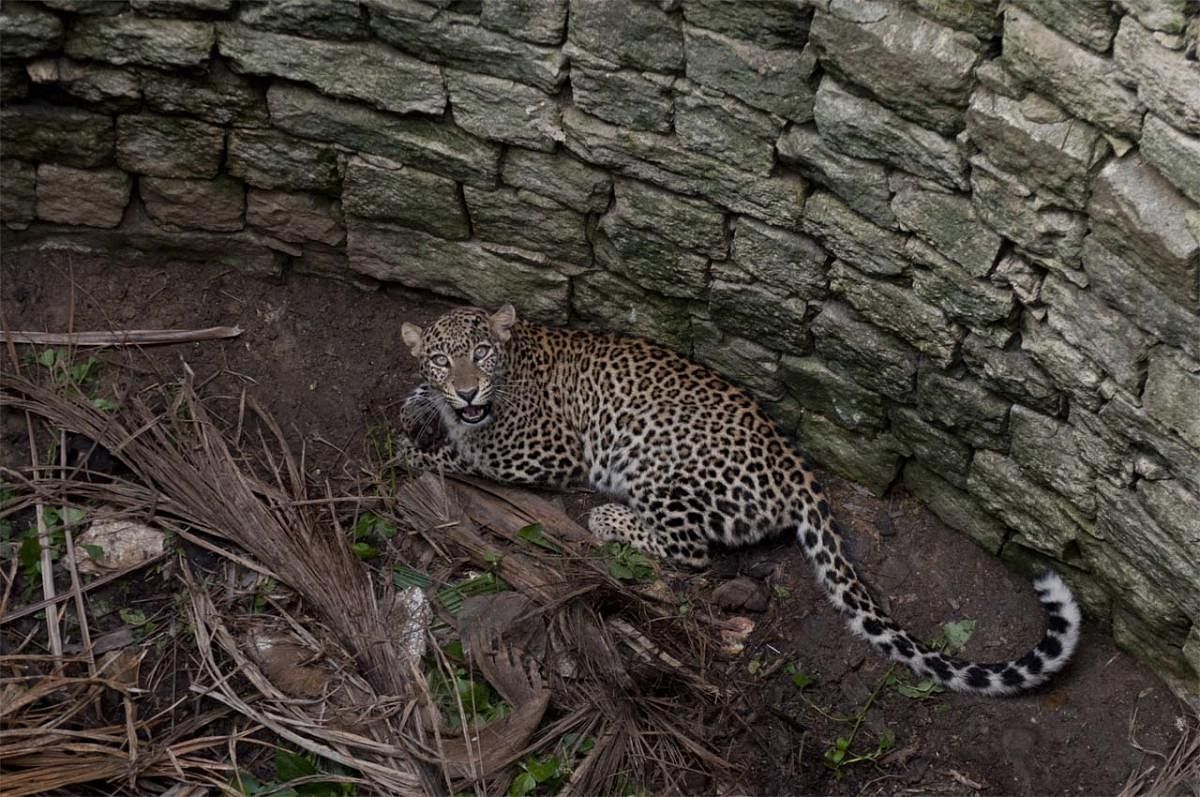An unconventional threat seems to be looming large on leopards in Karnataka as more and more cats are falling into unsecured and abandoned wells, resulting in deaths or severe injuries.
Even as the state boasts of a salubrious population of leopards, repeated incidents of leopards falling into wells has left wildlife enthusiasts worried.
According to latest findings by a team of researchers, whose work has been published in the UK-based scientific journal Oryx, between 2008 and 2017 as many as 70 leopards have fallen into open wells. The newfound threat has added to the list of factors like loss of habitat, diminutive prey species, retaliatory killing by mob, poaching and roadkill that are affecting the population of leopards across the state.
Increasing incidents of leopards falling into wells are reported from Udupi district (36 leopards), Tumakuru (9), Ramanagara and Uttara Kannada districts (8 each). Noted wildlife researcher Sanjay Gubbi of the Nature Conservation Foundation (NCF), who is also the lead author, said, “The highest number of falls occurred during pre-monsoon and monsoon season. This could be due to the low-visibility especially in high rainfall areas like Udupi and Uttara Kannada. Similarly, in Tumakuru and Ramanagara, the cats have fallen into dry or abandoned wells.”
The research team, comprising conservation scientists Aparna Kolekar, Pallabi Chakraborty of NCF and Vijaya Kumara of Kuvempu University, also, recorded 27 other species of animals, including sloth bear, elephant, gaur, sambar chital, muntjac, blackbuck, Bengal fox, mugger and small Indian civet, falling into open wells during the same period. Out of these, 11 animals died due to severe injuries.
“In most of the cases the forest department had rescued these cats and where the officials failed to reach on time, the public themselves had helped animals come out of the wells.
Of the 70 leopards, eight leopards had died of injuries sustained in the fall,and five severely injured leopards were sent to zoos for treatment. The remaining leopards were assisted to escape into the wild after providing primary treatment,” detailed one of the researchers.
Pointing out at the risk factors Gubbi said, “These falls into varying depths can lead to stress, injury and death besides posing threat to the public in surrounding areas if the cat manages to escape. With leopards increasingly documented in human habitats, any open and abandoned wells need to be securely covered to prevent this type of unconventional threats.”
